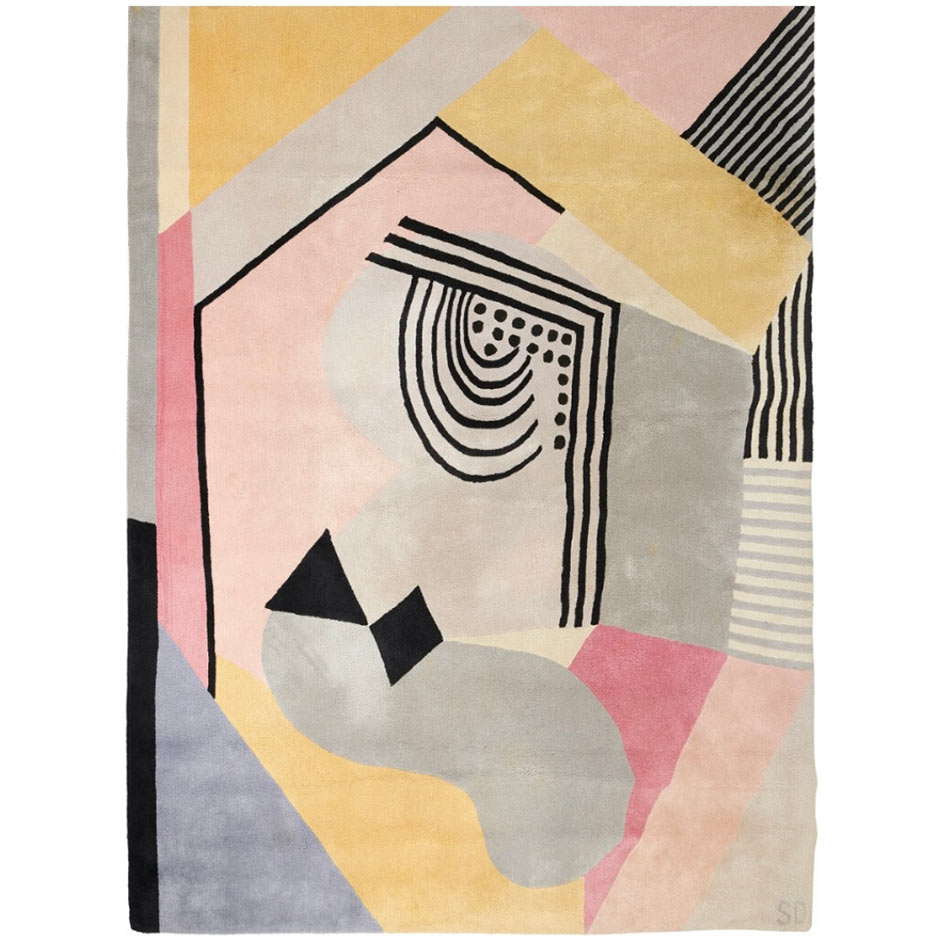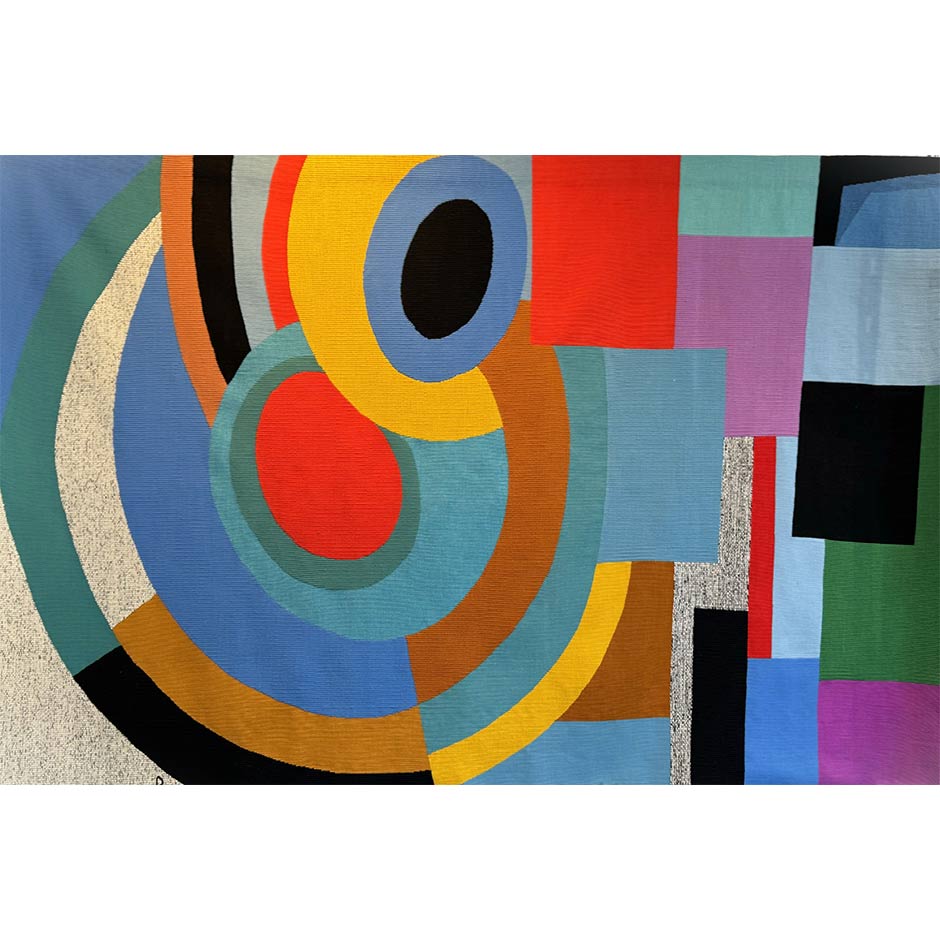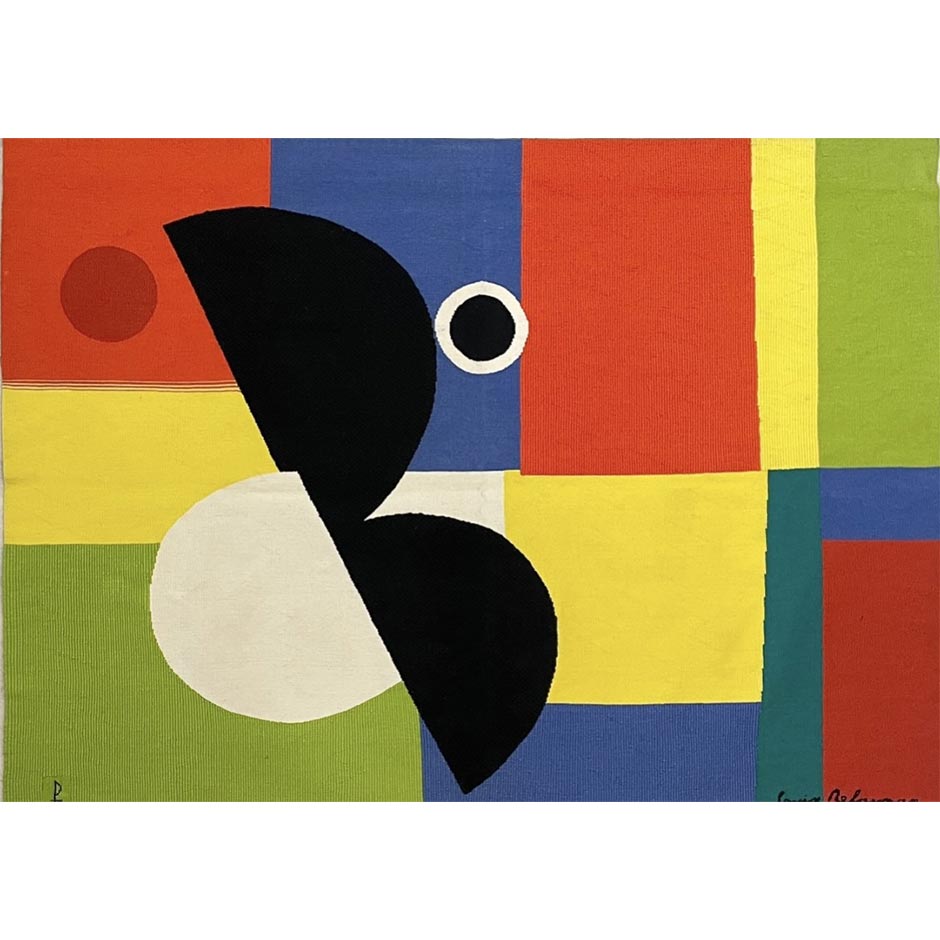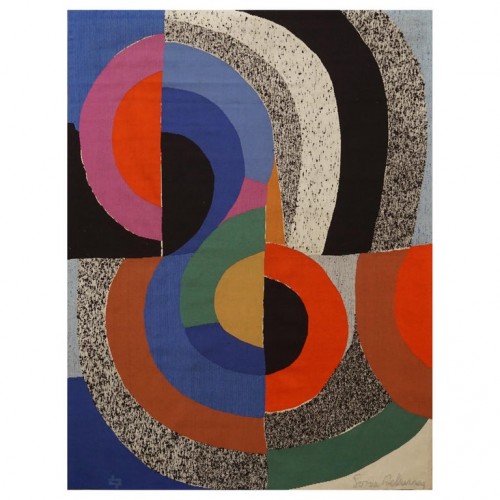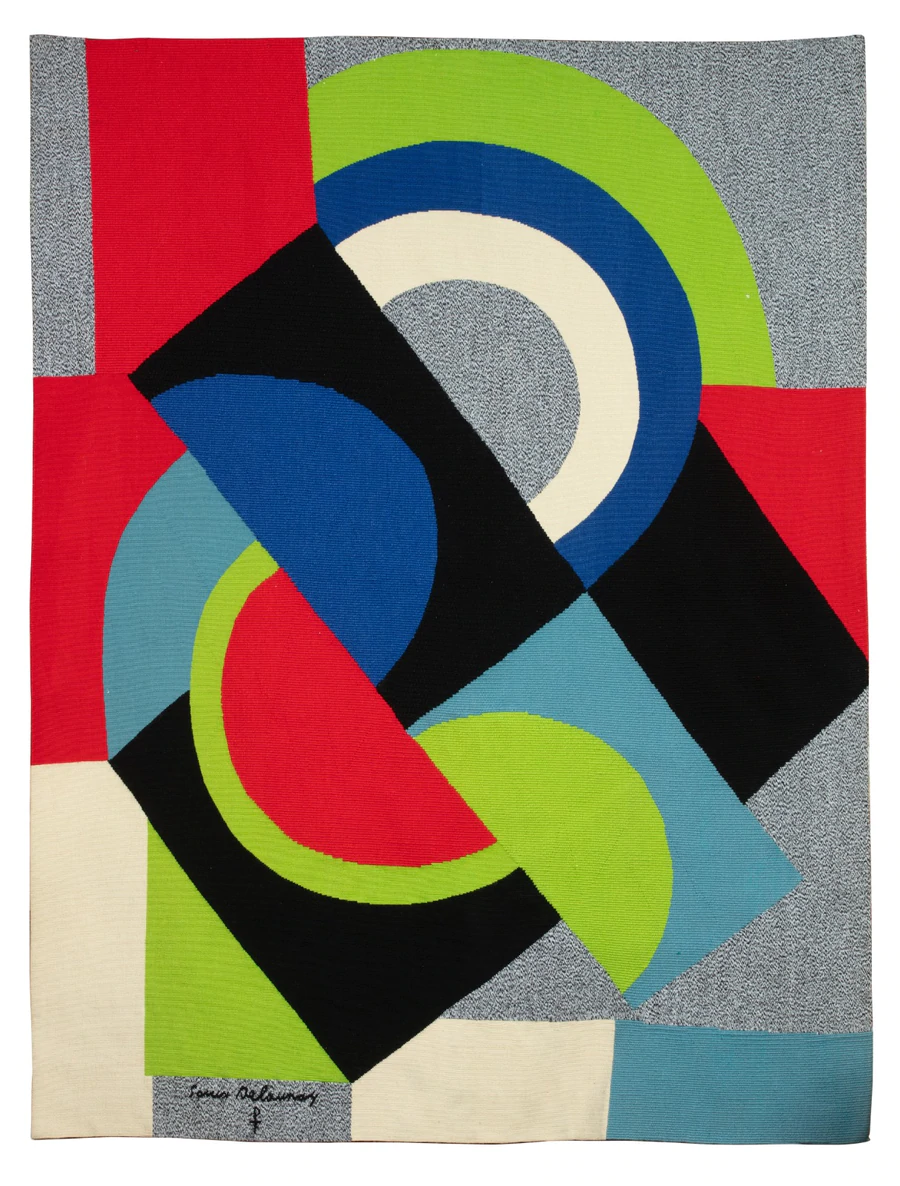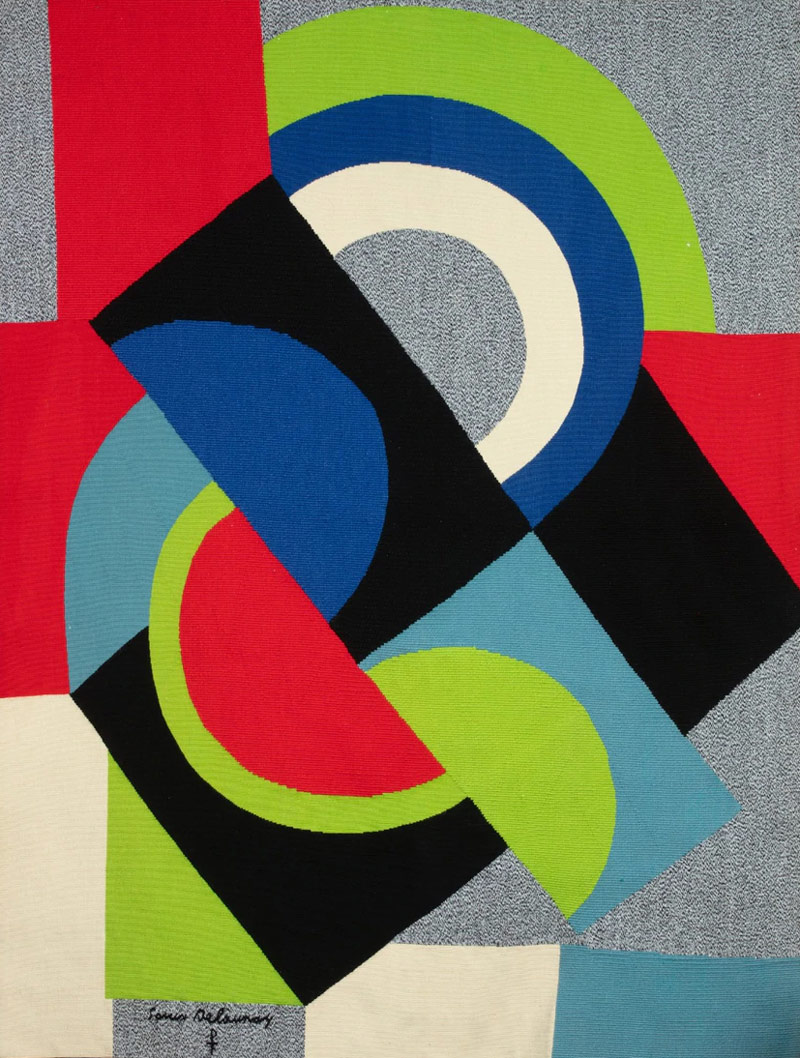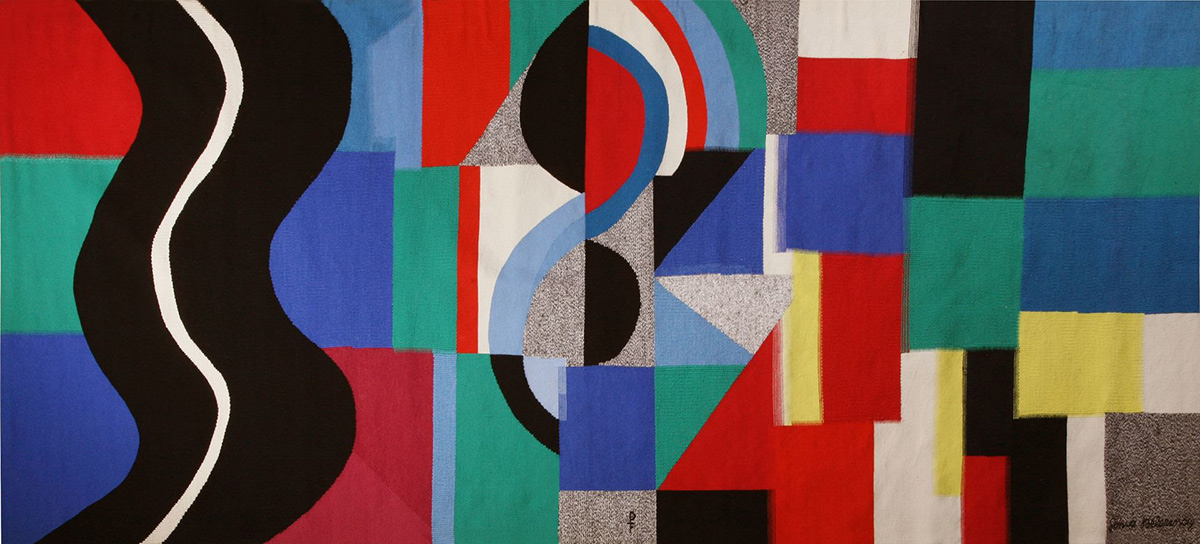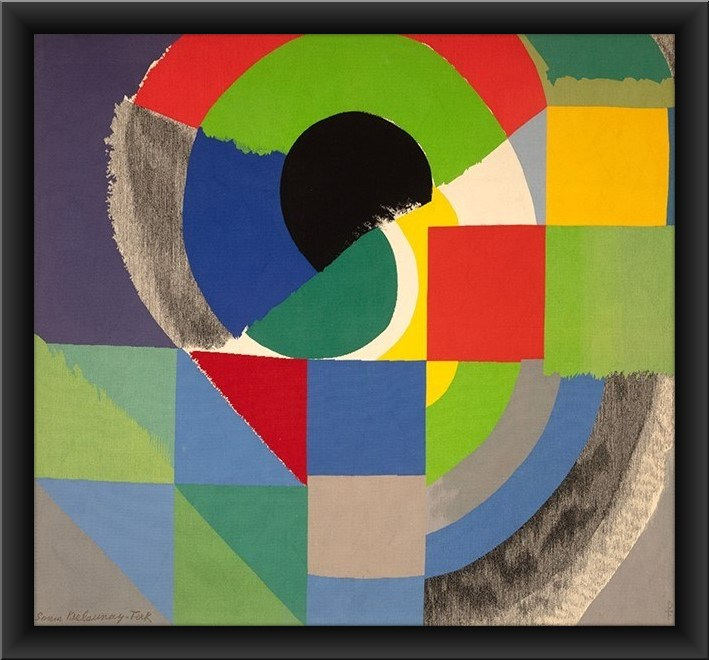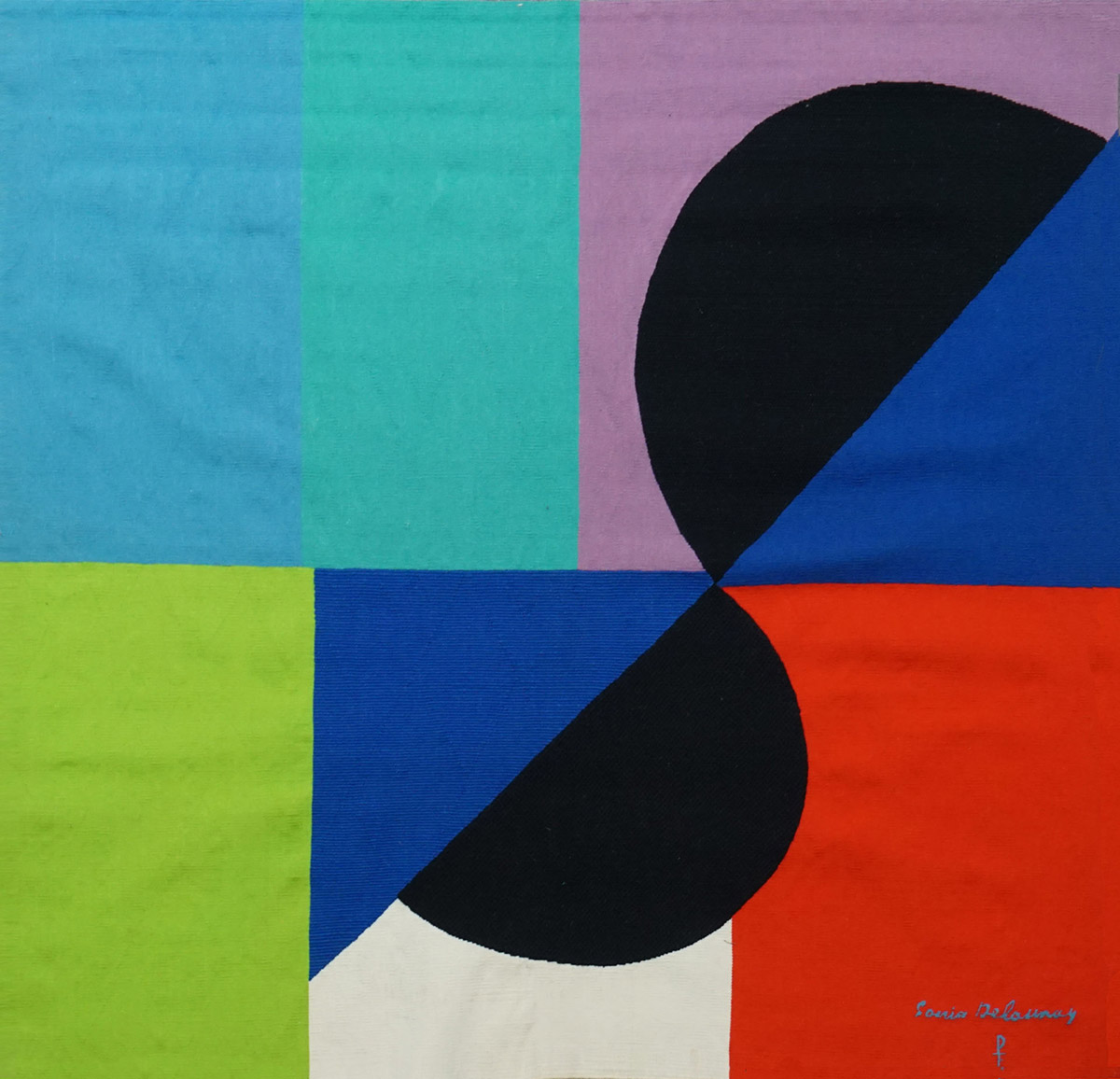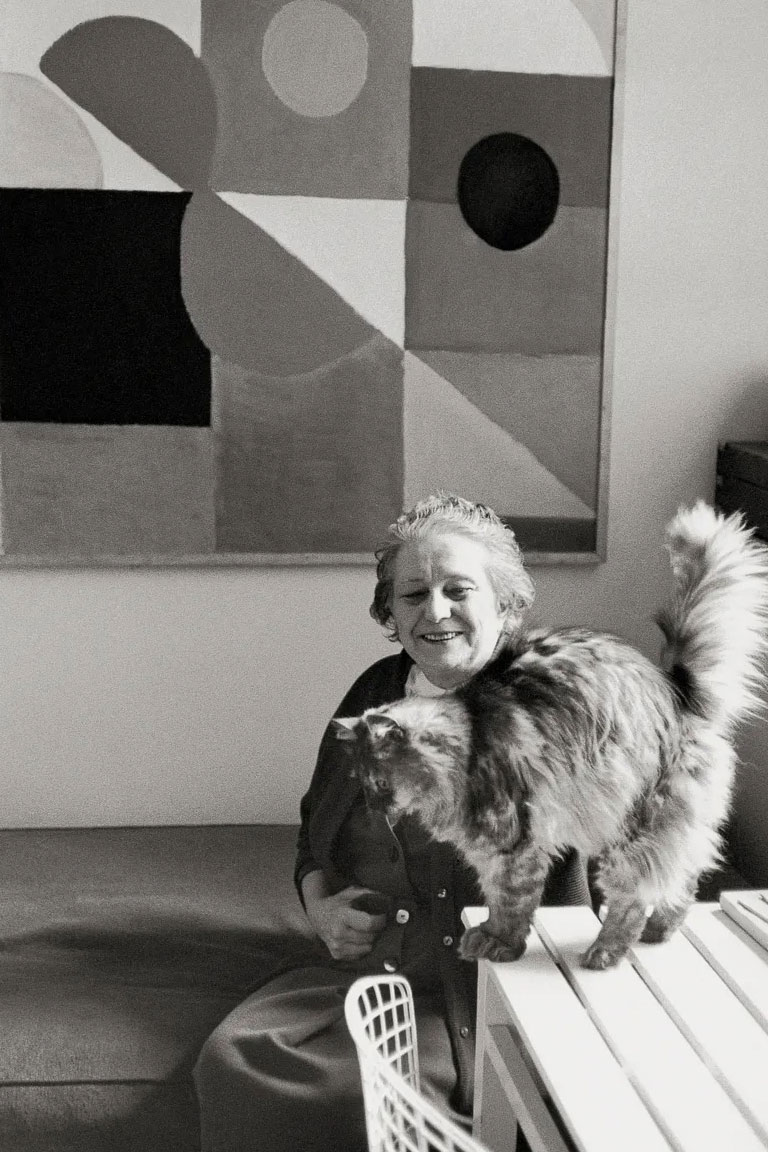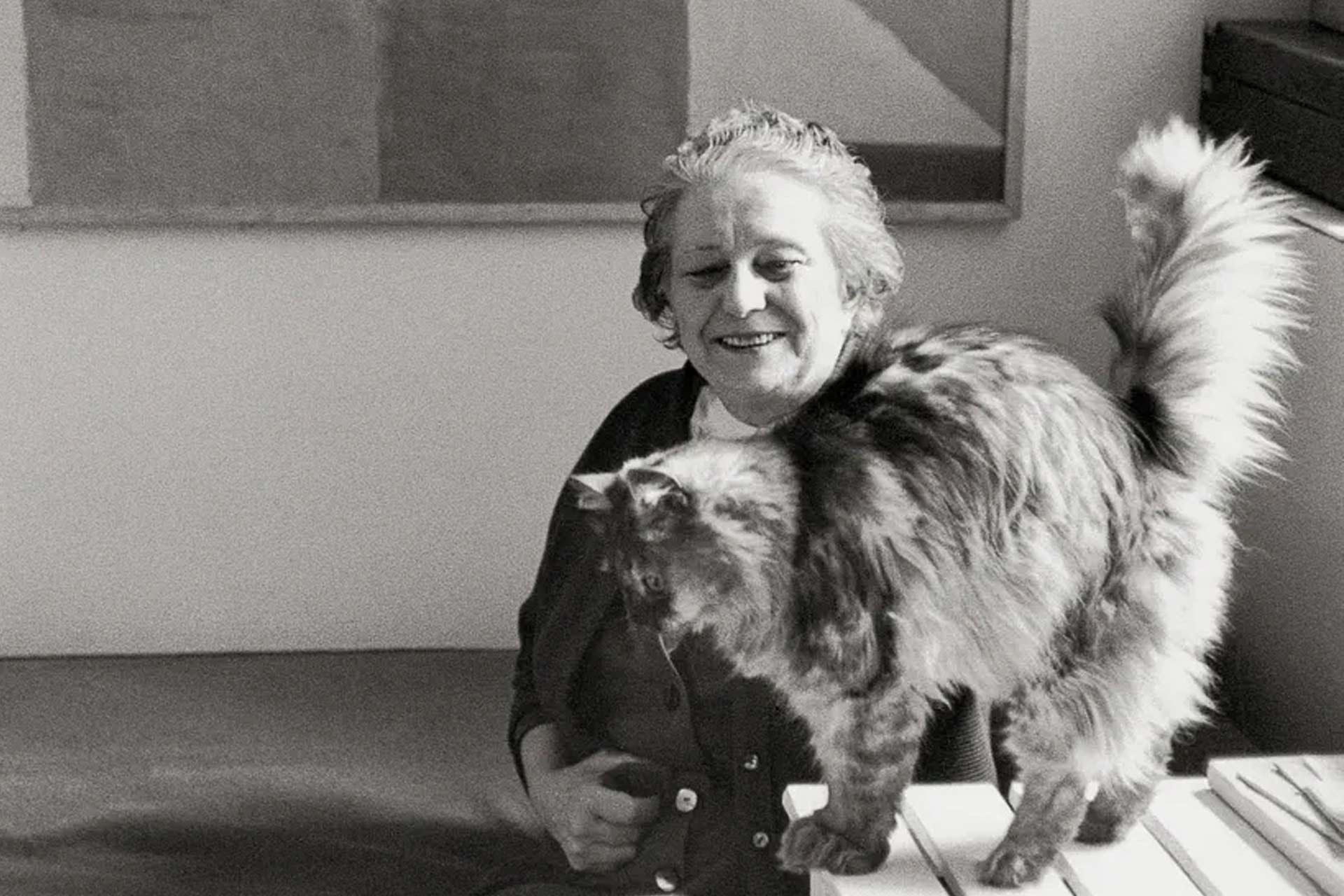Sonia Delaunay
(Ukraine – 1885 -1979)
The Boccara Gallery presents its remarkable collection of tapestries by Sonia Delaunay. Didier Marien, one of the first art dealers to understand the importance of the work of this avant-garde artist, played an essential role in her recognition. Today, the Boccara Collection brings together Sonia Delaunay’s most significant and imposing works. Each of these works is a dazzling testament to her innovative approach to color and form, continually redefining our perception of art. Sonia Delaunay-Terk is world famous for her bold use of color in abstract geometric patterns. Her artistic legacy is undeniable, marking a milestone in the history of modern art. The Boccara Collection pays tribute to her creative genius by showcasing her most iconic works, offering art lovers the opportunity to discover this visionary artist and appreciate her incredible contribution to contemporary art.
“For me, there is no difference between my painting and my so-called decorative work”.
She declares,
“I have never considered the minor arts artistically frustrating, on the contrary, it is an extension of my art.
Born on November 14, 1885, Sonia Delaunay (née Sarah Stern) studied drawing at the Karlsruhe Academy of Fine Arts in 1903, under the tutelage of Ludwig Schmidt-Reutler. Her artistic journey led her to Paris in 1905, where she developed a style influenced by Fauvism, characterized by the bold use of bright colors. However, it was in collaboration with her husband, the famous artist Robert Delaunay, that Sonia created a unique style that fused cubism and futurism. Guillaume Apollinaire gave her the nickname “orphism” to describe this innovative aesthetic. Throughout her career, she continued to explore this artistic approach through mediums such as textiles and interior design. In 1964, Sonia Delaunay became the first living female artist to receive a retrospective at the Louvre in Paris. This historical fact is of great importance, testifying to her significant contribution as a woman artist of the 20th century. She died on December 5, 1979 in Paris at the age of 94.
